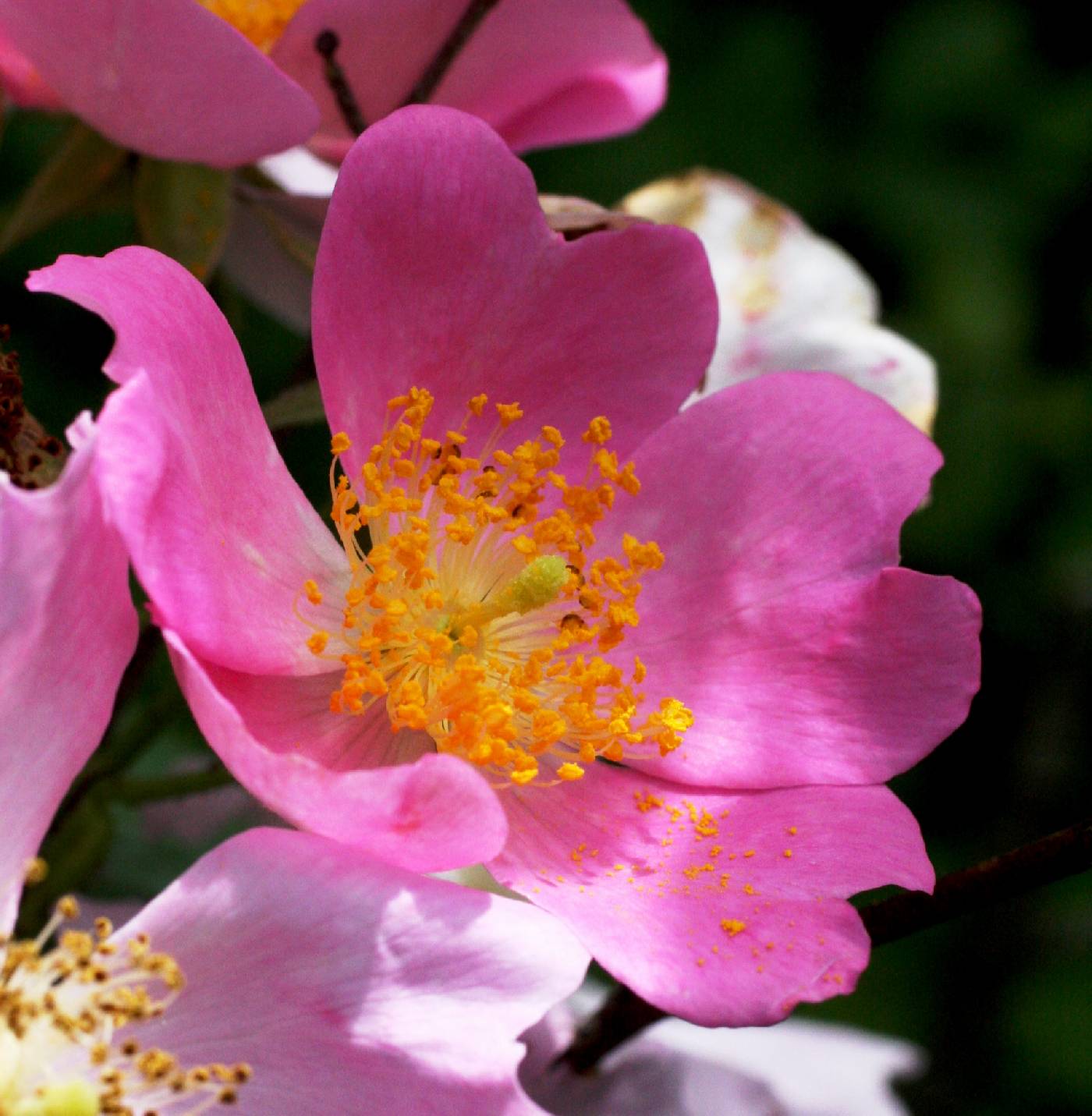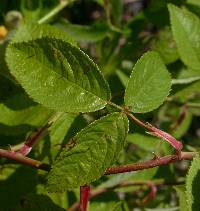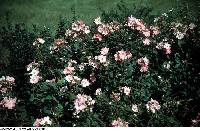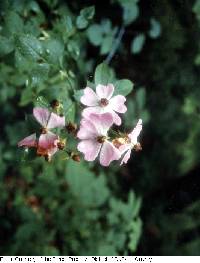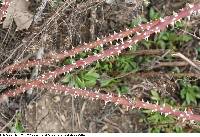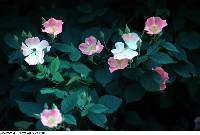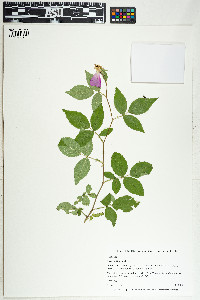Shrub 2 - 5 m tall
Stem: climbing to trailing, hairless, usually with sparse prickles that are stout, recurved, and flattened at the base.
Leaves: pinnately compound, with a stalked-glandular and sometimes sparsely prickly stalk and three or five leaflets. The leaflets are glossy dark green and hairless above, paler and hairless to slightly hairy on veins beneath, 3- 10 cm long, lance-shaped to oblong-egg-shaped with an abruptly pointed tip, firm, and sharply toothed.
Flowers: either male or female, found on separate plants (dioecious), borne several in a nearly flat-topped cluster (corymb), 4 - 8 cm across, with a glandular-hairy stalk and floral tube (hypanthium), non-persistent reflexed and glandular-hairy sepals 1.2 - 1.6 cm long, usually pink fading to whitish petals 2 - 3 cm long, and stamens and styles (hairless and united) that are exserted about the same length.
Fruit: bony achenes surrounded by the mature floral tube (hip). The hip is red, 8 - 12 mm long, and nearly spherical.
Stipules: subtending leaves, very narrow with a lance-shaped tip, non-toothed and sometimes glandular-hairy along margin.
Similar species: Both Rosa multiflora and Rosa setigera have a climbing or trailing habit and flowers with united, protruding styles. Rosa multiflora differs by its seven or nine leaflets and its white flowers. Rosa setigera var. tomentosa is distinguished from the typical variety by its dull leaflets with hairy undersides.
Flowering: late June to late July
Habitat and ecology: Locally frequent in woodland clearings and along edges of woods.
Occurence in the Chicago region: native
Etymology: Rosa is the Latin name for a rose. Setigera means bristle-bearing.
Author: The Morton Arboretum

